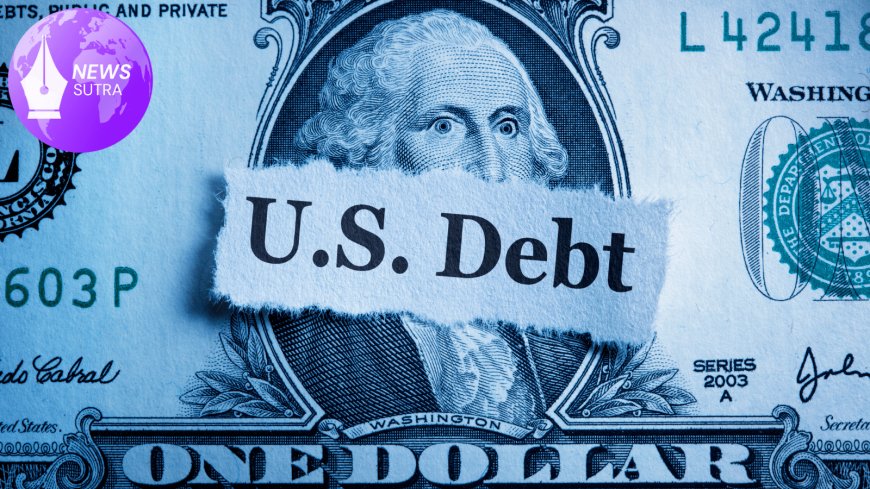U.S. National Debt Surpasses $37 Trillion for the First Time Amid Fierce Fiscal Debates
The U.S. national debt has surpassed $37 trillion for the first time, fueled by recent legislation. Experts warn of long-term risks as debates over fiscal policy intensify.

Washington, D.C., Tuesday, August 19, 2025 — The U.S. national debt has officially crossed $37 trillion, marking the highest level in American history. This milestone comes after recent legislation approved by Congress and signed by President Donald Trump, which authorized further borrowing to avoid a government shutdown and ensure continued funding for federal programs.
The surge in debt underscores the nation’s ongoing fiscal challenges, intensifying debates on Capitol Hill over government spending, taxation, and the long-term stability of the U.S. economy. Economists warn that while markets have remained resilient, rising debt levels could pose risks for future growth and inflation management.
A Historic Threshold Reached
According to the U.S. Treasury Department, the debt surpassed $37 trillion late Monday, August 18, a little more than a year after it crossed the $35 trillion mark. The pace of debt accumulation has accelerated due to increased defense spending, entitlement programs, and emergency economic measures enacted in recent years.
Lawmakers from both parties have pointed to differing causes and solutions. Republicans argue for curbing government spending, particularly on social programs, while Democrats emphasize the need for higher taxes on corporations and wealthy individuals to stabilize long-term finances.
Legislation Behind the Increase
The latest rise was enabled by a bipartisan bill passed earlier this month, which temporarily lifted the debt ceiling to prevent a potential government default. While the legislation avoided immediate financial turmoil, it has also sparked criticism for failing to outline a clear plan for deficit reduction.
Fiscal analysts note that the U.S. is now spending nearly $1 trillion annually on interest payments alone. This figure is expected to grow significantly if interest rates remain elevated.
Political and Economic Ramifications
President Trump, addressing the issue in a statement from the White House on August 18, defended the legislation, saying it was necessary to “protect America’s creditworthiness and keep our economy strong.” He added that future measures would be focused on “growth, job creation, and stronger trade deals” rather than spending cuts.
Democrats, however, criticized the administration for what they see as reckless fiscal policy. Senator Elizabeth Warren called the debt surge “a direct result of misplaced priorities,” while House Republicans countered that Democratic proposals for new social programs would only deepen the crisis.
Meanwhile, markets remain cautiously optimistic. Wall Street reacted calmly to the announcement, with major indexes closing slightly higher on Monday, though bond markets signaled unease as Treasury yields inched upward.
Growing Concerns Among Economists
Economists caution that surpassing $37 trillion is not merely symbolic — it represents structural risks. Rising debt could constrain government flexibility in responding to future crises, such as recessions or international conflicts.
“The danger is not immediate collapse,” said Mark Zandi, Chief Economist at Moody’s Analytics, “but the erosion of fiscal space. At some point, investors could lose confidence in America’s ability to manage its obligations without inflationary or disruptive consequences.”
A recent Congressional Budget Office (CBO) report projected that if current trends continue, the debt-to-GDP ratio could exceed 120% by the early 2030s, putting the U.S. on par with countries like Japan, where debt burdens have long shaped economic policy.
Public Reaction and the Road Ahead
For ordinary Americans, the $37 trillion figure may feel distant, yet its implications are real. Higher debt could eventually mean increased taxes, higher interest rates on loans and mortgages, or reductions in government services.
Despite the political wrangling, both parties acknowledge the need for a long-term fiscal framework. Proposals under discussion include reforming entitlement programs, adjusting tax policies, and implementing stricter caps on discretionary spending.
The debate is expected to intensify as the nation moves toward the 2026 midterm elections, where fiscal policy will likely be a central campaign issue.
Conclusion
The U.S. crossing $37 trillion in national debt is a watershed moment in fiscal history. While immediate economic fallout seems contained, the milestone raises serious questions about sustainability and governance in the years ahead. Without significant reforms, experts warn that the debt burden could limit future opportunities and place mounting pressure on future generations.
For now, Washington remains gridlocked between competing visions — one favoring austerity and another advocating for expansive investments — leaving the country on a precarious path into uncharted fiscal territory.
What's Your Reaction?
 Like
0
Like
0
 Dislike
0
Dislike
0
 Love
0
Love
0
 Funny
0
Funny
0
 Angry
0
Angry
0
 Sad
0
Sad
0
 Wow
0
Wow
0







































































